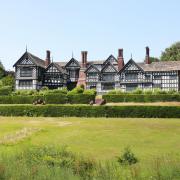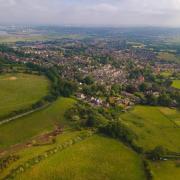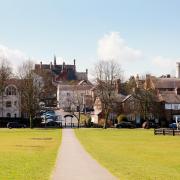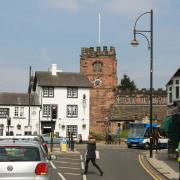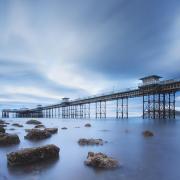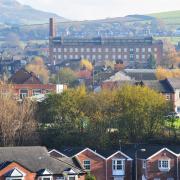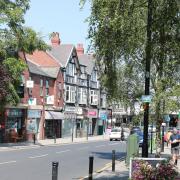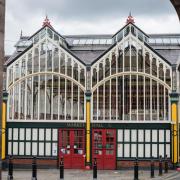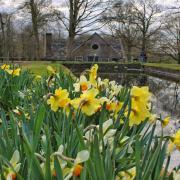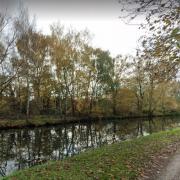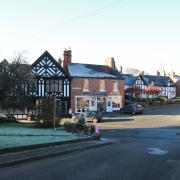As the town makes its third attempt to achieve city status, we ask if Stockport has what it takes to impress WORDS BY RAY KING
Could it be third time lucky for Stockport? The historic gateway to east Cheshire is bidding for city status, an opportunity afforded in the run up to the Queen’s Diamond Jubilee next year.
The town’s civic leaders, with the backing of MPs, the business community and prominent local personalities including the television presenter Dame Joan Bakewell, hope to better the disappointments of the Millennium bid and the Golden Jubilee bid in 2002.
Rivals this time include Bolton, Medway, Reading, Milton Keynes and Perth. The bids will be considered with reference to history, distinct identity, traditions, famous residents and any associations with royalty and the Queen will decide on ministerial advice.
Stockport’s bid centres on eminent Stopfordians, past and present, who have not only changed the course of British history, but are still shaping the great cities of the world.
The borough, its Medieval heart located where the confluence of the Rivers Goyt and Tame gives birth to the Mersey, is home to 300,000 residents and 10,000 diverse businesses and commands a long and unique history, strong and distinct identity and colourful heritage.
Stockport and its industrious citizens have been prominent in forging the modern world. In the 18th century, the town had one of the first mechanised silk factories in the United Kingdom and when Sir William Houldsworth’s spinning mill was completed in Reddish in 1865 it was the biggest in the world.
By the time of the Great Exhibition of 1851, Sir Joseph Whitworth, the Stockport-born son of a local school teacher, was renowned as the father of precision engineering, ranking alongside Victorian greats like Isambard Kingdom Brunel and George Stephenson. His watchwords were: ‘You tell me it can’t be done, but I give you these three words: let us try’.
Whitworth developed unprecedented standards of accuracy and in 1841, invented the standard screw thread. Stockport College, one of the UK’s largest, owes its origins to a legacy from Sir Joseph Whitworth.
A century later, Romiley-born Sir Frederick Calland Williams, played a key part in the development of the computer. With Tom Kilburn, he developed the world’s first stored memory computing machine on which in 1948 the first-ever successful program was run. The operation of all modern computer software can be traced back to that epoch-making event.
On the world’s stage, no-one has left a greater imprint in modern times – and is continuing to do so – than Norman Foster, born into a working class family in Reddish, Stockport, in 1935 and globally acclaimed as one of the pre-eminent architects of his generation. Knighted in 1990 and appointed to the Order of Merit in 1997, Lord Forster, ‘the hero of high-tech’, has won many international accolades.
Among his iconic projects over a 40-year career are Hong Kong’s airport, redevelopment of the Great Court of the British Museum, restoration of the Reichstag in Berlin, the City Hall, Millennium Bridge and ‘Gherkin’ in London, the Millau Viaduct in France, the new Wembley Stadium. Tower 2 of the planned reconstruction of the World Trade Center in New York, is one of many projects currently under construction or in the design stage.
Royal links
Links with the monarchy have at times been contentious, even treasonable. Stockport Castle, finally levelled in 1775, was a rebel stronghold against Henry II in the uprising by the king’s sons in 1173.
Nonetheless, his grandson Henry III granted the borough’s first Charter around 1220, the only basis for local government for 600 years and in 1260 a Market Charter that continues to this day on the same site since Medieval times.
One of Stockport’s most famous sons, the goldsmith Sir Edmund Shaa, became Lord Mayor of London in 1482-3 and during his term of office helped change the destiny of the English Crown. His role in cajoling Londoners to support the Duke of Gloucester in usurping the throne as Richard III is portrayed in Shakespeare’s play. Yet after Richard’s defeat and death at the Battle of Bosworth Field, Sir Edmund continued as Court Jeweller to his Tudor successor, Henry VII. Shaa’s legacy in Stockport – the establishment in 1487 of Stockport Grammar School, the first school in the north of England – has thrived for more than half a millennium.
If Sir Edmund Shaa played king maker, fellow Stopfordian John Bradshaw found notoriety as a king’s executioner. Born in Marple in 1602 and baptized in Stockport Parish Church - where the word ‘traitor’ has been mysteriously added against his name in the Parish Register - Bradshaw was the judge who pronounced the death sentence on Charles I in 1649 and was first to sign the king’s death warrant. He died in 1659 but after the Restoration, he was attainted for high treason and his body was exhumed and hung in chains at Tyburn.
Famous sons and daughters
Fred Perry remains peerless as the three-times winner of the Men’s Singles’ Championship at Wimbledon in successive years 1934, 1935 and 1936; the last Briton to hold the trophy aloft. After becoming World Table Tennis Champion in 1929, Perry only took up tennis aged 18. He led Great Britain to David Cup victory, won eight Grand Slam titles and was the first player ever to win all four Grand Slam events.
Stockport’s swimming stars include Diana Wilkinson, the first British woman to swim 200 yards in under a minute and James Hickman five-times World Champion in the 200m Butterfly. Steve Smith captained England’s Rugby Union side and Pete Boardman, conqueror of Everest in 1975 and one of Britain’s pre-eminent mountaineers was also Stockport born.
Other personalities in Stockport’s hall of fame include actors Dame Wendy Hiller and Joanne Whalley-Kilmer, writer Christopher Isherwood, television presenters Judith Chalmers and David Dickinson, newsreader Katie Derham, comedian Mike Yarwood, sculptor John Blakeley, and 19th Century explorer Admiral Sir George Back who discovered and named Stockport Island in the Canadian Arctic. Radical politician and most prominent member of the Anti-Corn Law League Richard Cobden was MP for Stockport between 1841 and 1847.



